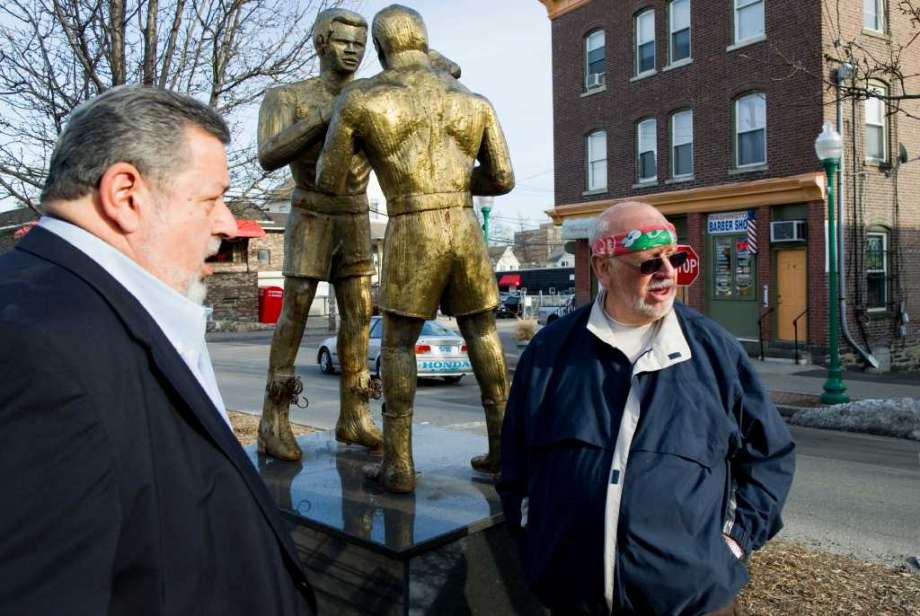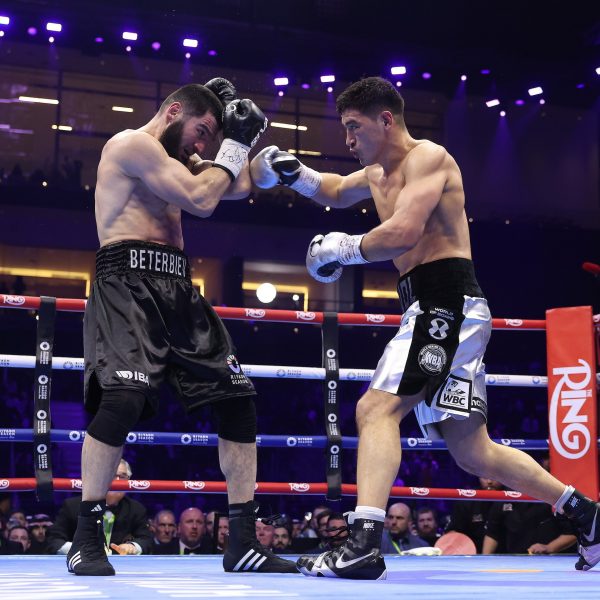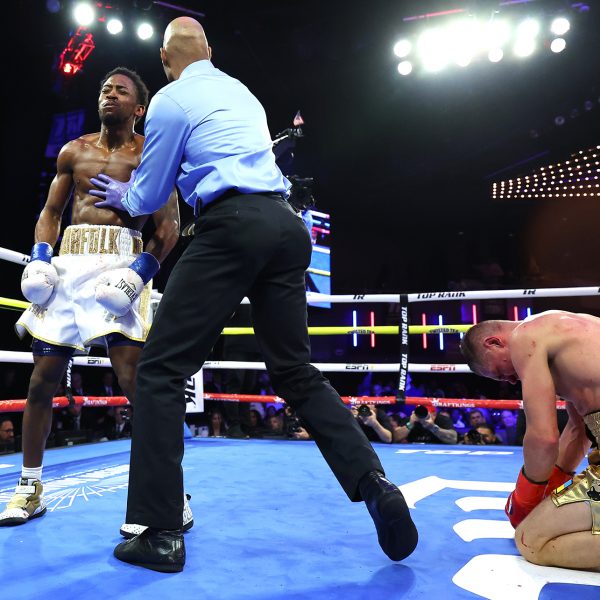STAMFORD, Conn. (AP) — City resident Canio Carlucci has been eating at Pellicci’s Restaurant on the West Side for as long as he can remember, so he’s always been aware of the statue of two bronzed life–size boxers going toe–to–toe in the middle of the road just a few feet away.
That statue — a depiction of legendary boxers Muhammad Ali and Joe Frazier squaring up during the legendary “Thrilla in Manila” boxing match that took place in 1975 — now sits in Carlucci’s welding company in Norwalk.
Little by little, he is working to restore the roughly 45–year–old sculpture. Once completed, the dueling boxers will be brought back to the West Side and installed at the square where they once stood.
For Carlucci, getting to work on such a familiar piece of art has been a thrill.
“I think they’re beautiful,” he said. “I have a lot of artists in my family, so any chance I get to be involved in something like this, I’m all about it.”
Once complete, the boxers will be placed in a newly formed community space created as part of the city’s efforts to revitalize the intersection of Stillwater Avenue and Smith Street. Before, the sculpture was essentially floating in the middle of the road, in a small median.
The piece of art was created by A.D. Richardson, who died of cancer at the age of 70 in 2002. Richardson, who lived in Stamford, was a welder who created pieces of art in his spare time. He was a prolific sculptor, and had his pieces exhibited locally, including at the Lynn Kottler Galleries in New York City.
Richardson was profiled in a column in The Advocate in 1978, when he was managed by a man named Ed Charla.
In the column, Charla referred to Richardson as “the Michelangelo of metal,” and said he was trying to get his work displayed at Madison Square Garden and at the offices of Penthouse magazine, which never materialized.
Ralph Antonacci, a longtime city activist who was the founding chairman of the Stamford Community Arts Council, said he stumbled across the “Thrilla in Manila”sculpture during the late 1970s at a refuse company in Waterside where Richardson worked. Antonacci approached Richardson at first because he needed help repairing a piece on his car, but was blown away by the welder’s art.
In a previous story in the Stamford Advocate, Antonacci described Richardson’s depiction of Ali and Frazier as the “holy grail of inner–city art.”
He described Richardson’s sculpture as abstract impressionism.
“A.D. worked in back rooms, in boiler rooms, in garbage companies, he did whatever he could do,” he said. “He was such a great artist in my mind.”
Antonacci and Anthony Pellicci, the deceased former owner of Pellicci’s Restaurant on Stillwater Avenue, spearheaded the effort in the mid–1990s to install the piece in a public place, with no funding from the city.
It has stood in the middle of the road at the intersection of Stillwater Avenue and Smith Street ever since, and even gave the square its informal name: Boxer Square.
In an Advocate article in 2011, Richardson’s widow, Willie Mae Richardson, insisted that her late husband expected to be paid for the sculpture. Maurice Branch, Richardson’s former manager and friend, said the sculptor thought he would be paid around $70,000 for the work.
Antonacci refutes those claims, however.
He said the arrangement was for the sculpture to be on permanent loan, with the artist retaining the right to make a cast from the original if anyone wanted to purchase it.
Over the last 25 years or so, the piece has deteriorated from standing outside in the elements.
Richardson created the piece by welding brass rods into a sheet metal form, but many parts are now rusted and some have come completely off. The feet of the boxers, in particular, have deteriorated, leaving large gaps, in which you can peer inside the structure, to see rust flakes.
“They’re in a little bit rougher shape than I initially thought,” Carlucci said.
The Norwalk welder thinks he’ll likely have to cut out the very bottom of the feet, and replace them with new pieces of steel, before covering it with bronze alloy.
“As far as bringing this back to being exactly like new, that’s going to be almost impossible,” he said.
Carlucci’s hope is to be able to apply a cold galvanizing compound to the interior of the piece to slow down rusting in the future.
“We’re just trying to make them look good and last longer,” he said.









Recent Comments